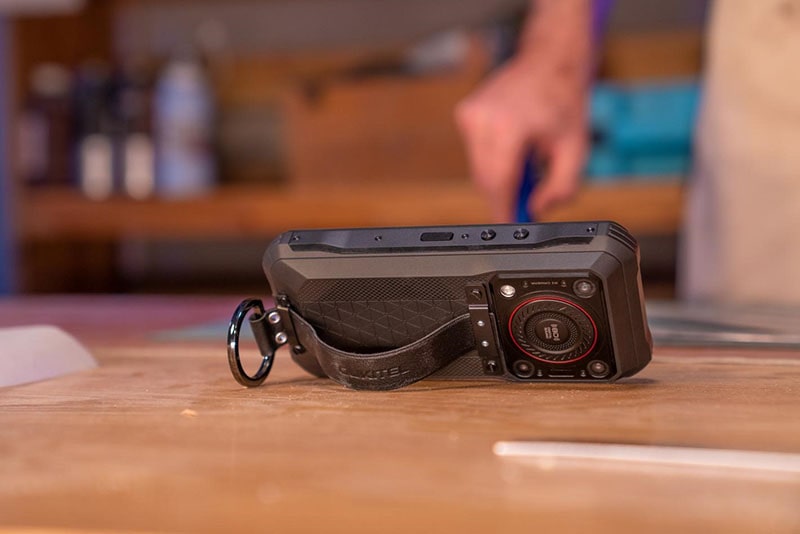Who hasn't heard of "OTG cables" in today's tech-loaded world? Short for On-The-Go – a feature that facilitates seamless connectivity between various devices. With our reliance on mobile gadgets and peripherals intensifying, the value OTG holds is sky-high! But here lies the knotty problem - when users find themselves grappling with the frustration of OTG not working as expected.
So, let's unravel this tricky knot, shall we? This article zeroes in on why you hit this roadblock and how to breeze past it without missing a beat. No more interruptive user-experience blues!
Reasons Why OTG Is Not Working
On the surface, the concept of OTG promises a convenient and efficient means of connecting devices, but several underlying issues may hinder its seamless operation. Let's pop open these hidden factors:
1. Device Incompatibilities
One prime suspect for OTG meltdowns? Incompatibility with your device. Not every smartphone or tablet out there supports the OTG functionality. Check first - is your gadget OTG-friendly? Search in the specs or user guides; they usually provide this information. No luck with OTG support? Tap into other connectivity methods, then!
2. File System Issues
Stumbling upon file system incompatibility is not that rare. For smooth data transitioning, OTG banks on particular file systems. If your USB employs a file system incompatible with your smartphone or tablet, OTG might not work properly. FAT32, exFAT, and NTFS are some of the common file systems! Validate compatibility between the USB and host device for seamless OTG workability.
3. Damaged Or Faulty OTG Cable
The physical component linking your devices—the OTG cable—can be a culprit in instances of OTG failure. Flawed or worn-down cables spell trouble, leading to occasional breaks or full-on failure. Spot any visible signs of stress, such as frays or bends on the cable? Opt for an uncomplicated cable swap to get things back up and running.
4. Insufficient Power Supply
'On-The-Go' (OTG) needs power, and a good chunk of it too. If your USB device is consuming more power than its host, it will lead to connection failure. So, check their power levels and make sure they're adequate. A USB device with an external power source might help. Low battery levels on the host device can also contribute to power-related issues, so maintaining a sufficient charge is crucial.
5. Software Issues
Sometimes, it's the software causing the OTG hiccups. Old operating systems? Potential issue - so update regularly. Compatibility between device software and OTG is key. Enhanced compatibility equals smooth sailing with OTG functions after squashing potential software bugs!
How To Resolve OTG Not Working Issue?
We've pointed out the common culprits, now it's solution time. Let's dive into practical resolution steps to smooth out On-The-Go hiccups.
1. Device Compatibility And File System Check
Keep in mind that your smartphone, tablet, or any host gadget needs to be OTG-ready. Get this info from your device specifications or user manual. No OTG support? Look for alternate connectivity paths. Ensure a compatible file system flanking your USB and host machine. A reformat could fix things up – swap over to widely acceptable systems like FAT32 or exFAT. Compatibility issues solved!
2. Reformatting The USB Device
Give a thought to backing up, before you dive headfirst into reformatting. One click will wipe all data clean from the USB device! Format with a file system that's compatible with both hosts - your USB and device alike. FAT32 and exFAT are often the popular choices here.
3. Inspecting The OTG Cable
Have an eagle-eye view of that OTG cable. Frayed wires send a red signal, and so do bent connectors. Found damage? Clear out for a fresh, working OTG cable.
4. Power-Up Check
Ensure that both the host device and the connected USB device have sufficient power. Running low on power? An external power booster could be your saving grace for the USB device.
5. Updating Software And Drivers
Keep an eye out for firmware and operating system updates on your device. Got any? Get them installed straight away! This way, you stay in sync with the latest OTG standards. And, if there's a provision, look out for USB driver updates, too. Dated drivers have a knack for stirring connectivity hiccups.
Preventing Future Otg Connectivity Issues
While troubleshooting provides immediate solutions, preventing future occurrences of OTG connectivity problems requires a proactive approach. Bank on these strategies:
1. Regularly Update Firmware And Drivers
Go turn-on-mode with automatic updates right at your device's firmware and operating system level! You'll get the latest compatibility enhancements and OTG functionality! Also, do perform regular checks for USB driver updates like clockwork! Device manufacturers often toss new driver versions in a bid to iron out known glitches while jazzing up overall device compatibility.
2. Invest In High-Quality OTG Cables
Stick to reputable manufacturers for certified OTG cables. These cables see proper testing, aligned with industry standards. Chances of connectivity issues? Kept at bay by cable quality! Regularly check your OTG cables; any sign of wear is a red flag. Replace any cables showing wear and tear to maintain reliable connections between devices.
3. Mindful Device Handling
Be careful when handling devices and their accompanying cables. Don't push too hard when connecting – that can result in physical damage. Safe ejection – Always in the right direction! Eject or safely remove using the right method on your host device before unplugging that OTG cable; abruptly disconnecting could lead to data corruption and potential connection glitches down the lane.
4. Battery Maintenance
First things first, check the battery. Both USB and host devices need to have adequate power all the time! Low power means low performance – compromising the OTG functionality in the future. And when you're plugging your device into charge, play smart. Choose trusty power sources eliminating any chance of erratic fluctuations.
5. Periodic System Checks
Before attempting OTG connections, confirm the compatibility of your devices. Track down the latest specs for info on OTG support. Make sure the file systems for both USB and host devices are compatible to rule out file-system issues cropping up during data swaps. A step forward in caution pays off!


















